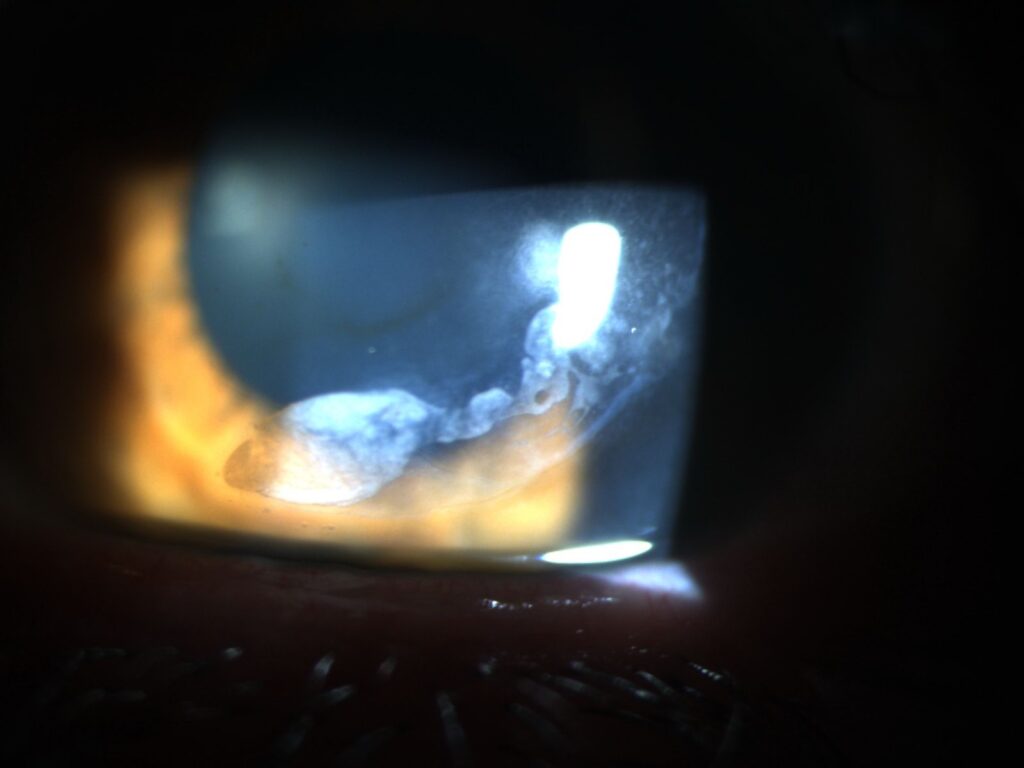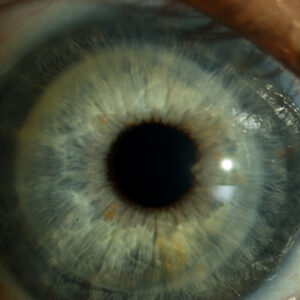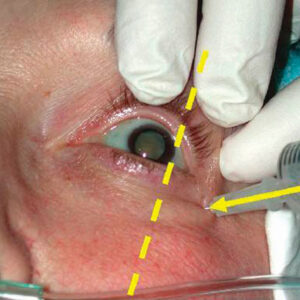Refractive
February 2015
by Maxine Lipner
EyeWorld Senior Contributing Writer
Studying the impact of enhancements following laser surgery
For patients who have undergone LASIK, PRK can in many cases be the way to go for an enhancement, according to Bryan S. Lee, MD, JD, assistant professor of ophthalmology, University of Washington, Seattle. Results of a study published in the August 2014 issue of the Journal of Refractive Surgery showed that for LASIK patients needing enhancements for which a flap lift may be difficult, PRK is safe and highly effective.
While immediately after LASIK most practitioners are comfortable lifting the flap for an enhancement, this is not so later on, Dr. Lee said.
“In general, most people do lift the flap for a LASIK enhancement early on,” he said. “But I think it’s clear that the trend has been toward doing PRK once the flap has been in position for more than 2 or 3 years.”
When lifting older flaps, the risk of epithelial ingrowth mounts. “That risk is as high as 20%, and epithelial ingrowth can lead to vision-threatening complications,” Dr. Lee said.

Source: Preeya K. Gupta, MD
Investigating PRK enhancements
Such was the impetus for launching the study.
“We wanted to see what the outcomes are if you do PRK instead of lifting the flap and see if it’s necessary to make any adjustments in how you plan the surgery,” Dr. Lee said.
Included in the study were 43 patients from the practice who underwent a PRK enhancement between 2004 and 2012 in eyes that had previously been treated with LASIK, Dr. Lee said, adding that those who either had visually significant cataracts or who did not have at least 7 months of follow-up were excluded, as were patients whose target with the laser was anything but plano.
Eligible patients were divided based on hyperopic versus myopic refractive error pre-enhancement. Results indicated that overall patients do well with PRK enhancements, Dr. Lee said.
“In both groups the mean uncorrected distance vision improved after enhancement from 20/40 to the 20/20 to 20/25 range, so patients did well from that standpoint,” Dr. Lee said. “I think we also showed that the procedure is safe—we didn’t have safety concerns in this group.”
When considering doing a PRK enhancement after LASIK, one of the key things to keep in mind is the patient’s refractive error at the time of PRK, Dr. Lee said.
“What we discovered is that patients who were hyperopic generally responded to the planned laser treatment as expected,” he said. “But we also found that patients who were very low hyperopes, below +1 D, didn’t benefit as much from an enhancement.” For those low hyperopes there was more variability in their response, Dr. Lee said. He added that this was the largest known study that looked specifically at how hyperopes and myopes differed in their responses with an extended follow-up period.
Myopic considerations
For patients who were myopic at the time of the enhancement, investigators found that results tended toward overtreatment.
“Because they responded more than predicted, we developed a nomogram that would help adjust the amount of myopic treatment downward for that group,” Dr. Lee said.
To compensate for potential overtreatment, the nomogram makes the following adjustment: Multiply 0.19 by the spherical equivalent of the refractive error and add 0.75 D to that total.
“[Practitioners can] take that number and use it as the surgeon’s adjustment for the myopic enhancement,” he said.
Dr. Lee theorized that the observed overtreatment may result from the fact that almost everyone in the study population had myopia pre-LASIK. “These were corneas that had received myopic LASIK, so it seems that a cornea that had already been flattened with myopic LASIK and has residual myopia responds to the laser differently than a cornea that has residual hyperopia,” he said.
“This is most likely from the treatment pattern being central again for a myopic enhancement,” Dr. Lee said. Another possible explanation is that most of these patients had LASIK done with a microkeratome instead of a laser, so the flaps tended to be thicker in the center and thinner on the periphery, he said.
In Dr. Lee’s view, the take-home message is that PRK enhancement after LASIK is safe and has good results. Still, he advises practitioners to be clear with patients about expectations.
“I think that a surgeon who’s about to do PRK enhancement needs to explain to patients that it’s not going to be like when they first got LASIK—there’s a bit more unpredictability,” he said. “That may be because the excimer laser is less predictable in treating a flattened cornea or because of the significant changes in the corneal epithelium that we know happen during the healing process from LASIK. By performing PRK, you’re removing the epithelium and having it regrow, which introduces variability.”
Also, when performing these PRK enhancements, Dr. Lee recommends considering the use of mitomycin-C. “We weren’t sufficiently powered to prove it, but there was a non-statistically significant trend toward less haze with mitomycin,” Dr. Lee said.
In addition, he advises practitioners to be on the lookout for cataract before performing a PRK enhancement.
“A lot of this population did have a decent amount of cataract,” Dr. Lee said. “So before doing a PRK enhancement, make sure that the lens isn’t the reason for the change in vision.”
Overall, while Dr. Lee sees PRK enhancements as a valuable approach for many prior LASIK patients, he urges practitioners to be clear with patients that this is not like the first time they underwent refractive surgery.
“I think that you want to make sure patients expectations are realistic there’s a good chance they’ll benefit from it but it’s not like treating a previously untouched cornea,” he said.
Editors’ note
Dr. Lee has no financial interests related to his comments.



